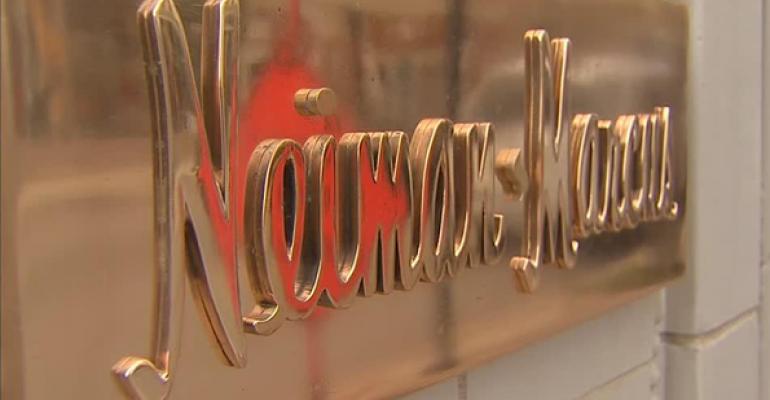Weighed down by debt and aiming to devote more resources to its full-line stores, luxury department store operator Neiman Marcus announced recently that it would close 10 Last Call stores in its off-price fleet.
The step is unusual, particularly because the off-price channel has been one of few growing segments of brick-and-mortar retail, with many chains planning to expand in the coming years, not close locations. Also, the Last Call stores have been performing well, especially in comparison to the retailer’s overall business, according to company statements and industry experts.
“I’m a little surprised to see they are getting out of them, only … because the stores were cash flow positive,” says Jan Kniffen, CEO of J. Rogers Kniffen Worldwide Enterprises, an equity research and financial management consulting firm specializing in retail.
Another surprising aspect of the decision is that the stores are located in strong centers operated by major REITs, such as Philadelphia Mills in Philadelphia and Arundel Mills in Hanover, Md., both owned by Simon Property Group, and Great Lakes Crossing in Auburn Hills, Mich., owned by Taubman Centers.
Dallas-based Neiman Marcus Group, which operates the stores, will close the 10 locations in two waves, one in November 2017 and the second in January 2018. After that, the company will have about 27 Last Call stores remaining.
“They’re not closing these stores because they are in bad malls,” Kniffen says. “They’re in some of the best shopping centers. Simon won’t have any problems filling those holes.”
Last Call stores operate on leases that are about 10 years in duration, Kniffen estimates. Simon deferred comments about the situation to Neiman Marcus.
The closures are not an insignificant issue for the retailer’s owner, the Neiman Marcus Group, however. While its off-price business has seen positive growth, the Neiman Marcus Group has posted negative same-store sales growth for the last seven quarters, according to company information.
It has also been carrying a significant debt load of $6.7 billion, according to its most recent quarterly statement, for April 29, 2017. The company also reported a loss of $24.8 million in its net earnings for the quarter.
The company’s declining sales and growing debt load prompted it to seek strategic alternatives in recent months, such as an IPO, which it called off in January. It was also in talks with Hudson’s Bay, the operator of Macy’s and Bloomingdale’s chains, about a possible combination of the two companies. A transaction would have depended partly on Hudson’s Bay working around Neiman Marcus’ debt load. That plan also fell by the wayside, in June.
Neiman Marcus launched its Last Call Studio business in late 2010 or early 2011, joining other luxury retailers and mid-priced department stores that began expanding through the channel, including Nordstrom’s Nordstrom Rack, Off Saks by Saks Fifth Avenue, and the Backstage brand from Macy’s. Neiman Marcus did not, however, build Last Call on the same model as other thriving off-price retailers like T.J. Maxx, Burlington and Ross Dress for Less, which happen to operate in lower price ranges.
Those chains developed the practice of buying store stock directly from suppliers and did so in small quantities. The latter approach helped pioneering off-price retailers like T.J. Maxx keep a tight rein on inventories and add a treasure hunt experience to shopping, Kniffen says. About 80 percent of what T.J. Maxx sells to consumers is bought directly from suppliers.
As for off-price concepts run by Neiman Marcus and its competitors, including Saks Fifth Avenue and Bloomingdale’s, that ratio drops to as low as 60 percent. The rest of the inventory in the stores comes from the full-line segment. With that merchandising strategy, the average price points tend to be higher.
Like other department store operators, including those in the luxury segment, Neiman Marcus has been struggling against a tide of declining same-store sales and consumers’ evolving shopping habits.
“We are investing in our strengths as the clear leader of high-end luxury retail,” Elizabeth Allison, senior vice president of Last Call, said in a statement. “This decision is about optimizing our Last Call store portfolio to deliver the best customer service and freeing up resources to support new initiatives for our full-time Neiman Marcus and Bergdorf Goodman channels.”
Retailing experts do not see the move as a reflection on the health and viability of the off-price sector. Kniffen cautions, however, that even the off-price segment has the potential to become overbuilt, and go through a period of retrenchment.
“I think we are building too many,” Kniffen said. “The segment is not totally immune to the Internet.”

